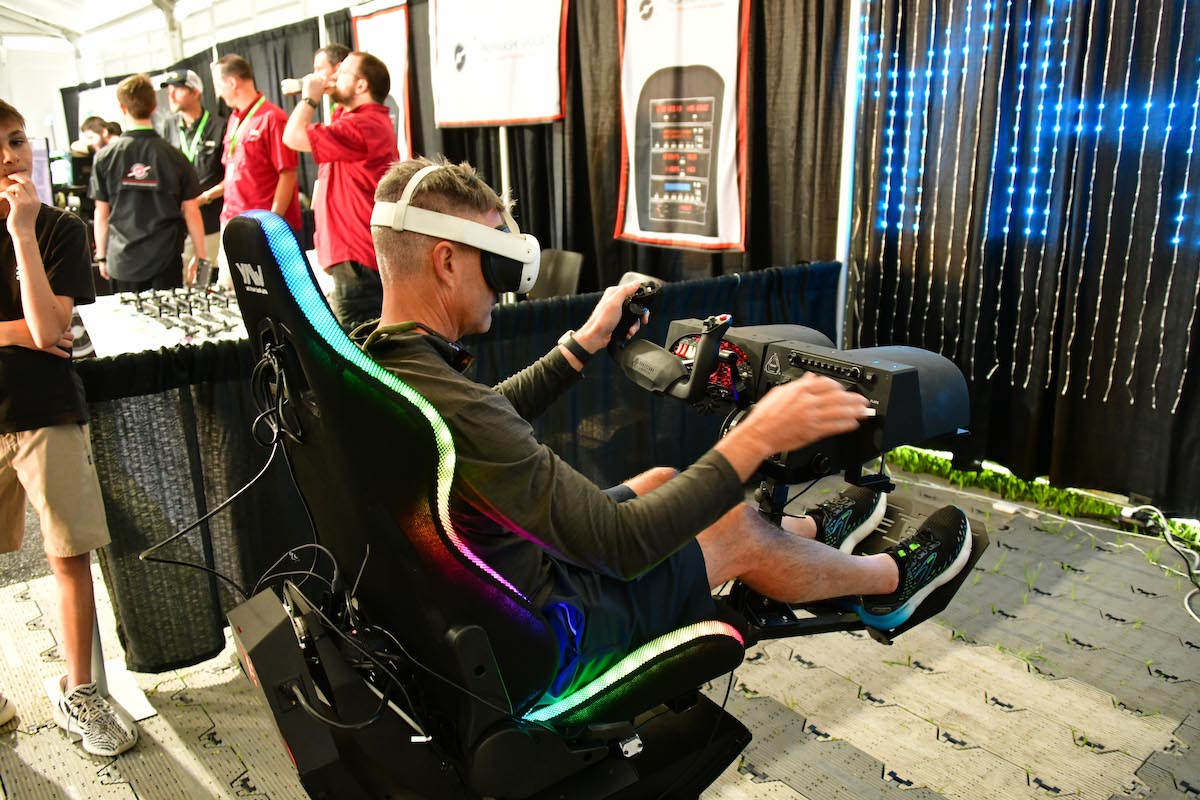
Flight simulation has long been a beloved pastime for many aviation enthusiasts, and it's no surprise that many SUN 'n FUN attendees are passionate about this immersive experience. With the advent of Virtual Reality (VR), the world of flight sims has become even more captivating, offering an unparalleled sense of realism and immersion. Choosing the right VR headset is crucial to fully enjoying this experience, and several considerations must be taken into account. Let's explore what to look for in a VR headset and compare some of the top options available today.
Computer Requirements
While the bulk of the processing for VR flight simulation happens on the GPU, it is still important to ensure that your computer has a modern, multi-core CPU to handle various background tasks and provide smooth performance. Here are the key components to consider:
- Graphics Card (GPU): The GPU is the heart of your VR setup. For an optimal experience, look for high-end GPUs like the NVIDIA RTX 3080 or AMD Radeon RX 6800 XT, which can handle the high demands of VR graphics.
- Memory (RAM): Adequate RAM is essential for smooth performance. Aim for at least 16GB, though 32GB is recommended for the best experience.
- Storage: VR applications are large and require fast storage. An SSD with at least 500GB is ideal to ensure quick load times and smooth operation.
- Connectivity: Many VR headsets, including the Oculus Quest 3, require a high-bandwidth USB-C connection. Ensure your motherboard supports this.
Choosing the Right VR Headset
When selecting a VR headset for flight simulation, consider factors such as resolution, refresh rate, field of view, and tracking capabilities. Let's compare some of the leading headsets on the market, starting with the Oculus Quest 3.
Oculus Quest 3
The Oculus Quest 3 is known for its versatility and ease of use. Here are its key features:
- Resolution: The Quest 3 offers a high-resolution display that provides clear and detailed visuals.
- Standalone Capability: Can operate independently without a PC, making it versatile for various VR applications.
- High-Bandwidth USB-C: For flight simulation, the Quest 3 requires a high-bandwidth USB-C connection to your PC to deliver the best performance.
- Quest Link: This feature allows wireless connection to your PC using a high-bandwidth wireless access point, providing greater freedom of movement.
Valve Index
The Valve Index is highly regarded for its premium build quality and advanced features:
- Display: High-resolution display with a refresh rate of up to 144Hz, providing smooth and immersive visuals.
- Field of View: Wide field of view for a more natural and expansive visual experience.
- Tracking: Utilizes external base stations for precise and reliable tracking.
HP Reverb G2
The HP Reverb G2 stands out for its exceptional resolution and comfort:
- Resolution: One of the highest resolution displays available, offering incredibly sharp and detailed visuals.
- Comfort: Ergonomically designed for extended use, with adjustable straps and face padding.
- Tracking: Inside-out tracking eliminates the need for external sensors, simplifying setup.
HTC Vive Pro 2
The HTC Vive Pro 2 is known for its high-resolution display and robust tracking capabilities:
- Resolution: 5K resolution for crystal-clear visuals.
- Comfort: Adjustable head strap and balanced weight distribution for comfort during long sessions.
- Tracking: Compatible with SteamVR and Vive trackers for comprehensive and precise tracking.
Peripheral Requirements
To complement your VR headset and enhance your flight simulation experience, consider these additional peripherals:
- Controllers: Ensure your headset's controllers are compatible with your flight simulation software and provide precise input.
- Audio: A high-quality headset with spatial audio can significantly enhance the immersive experience.
- Flight Controls: Investing in a yoke, throttle quadrant, and pedals can make your flight simulation experience more realistic and enjoyable.
Final Thoughts
Choosing the right VR headset for flight simulation involves balancing your needs and preferences with the capabilities of the available headsets. While the Oculus Quest 3 offers versatility and ease of use, other options like the Valve Index, HP Reverb G2, and HTC Vive Pro 2 provide compelling alternatives with their own strengths. Ensure your computer is equipped with a powerful GPU, sufficient RAM, and adequate connectivity to support your chosen headset. With the right setup, you can enjoy an immersive and thrilling flight simulation experience that brings the skies right into your home. Happy flying!





